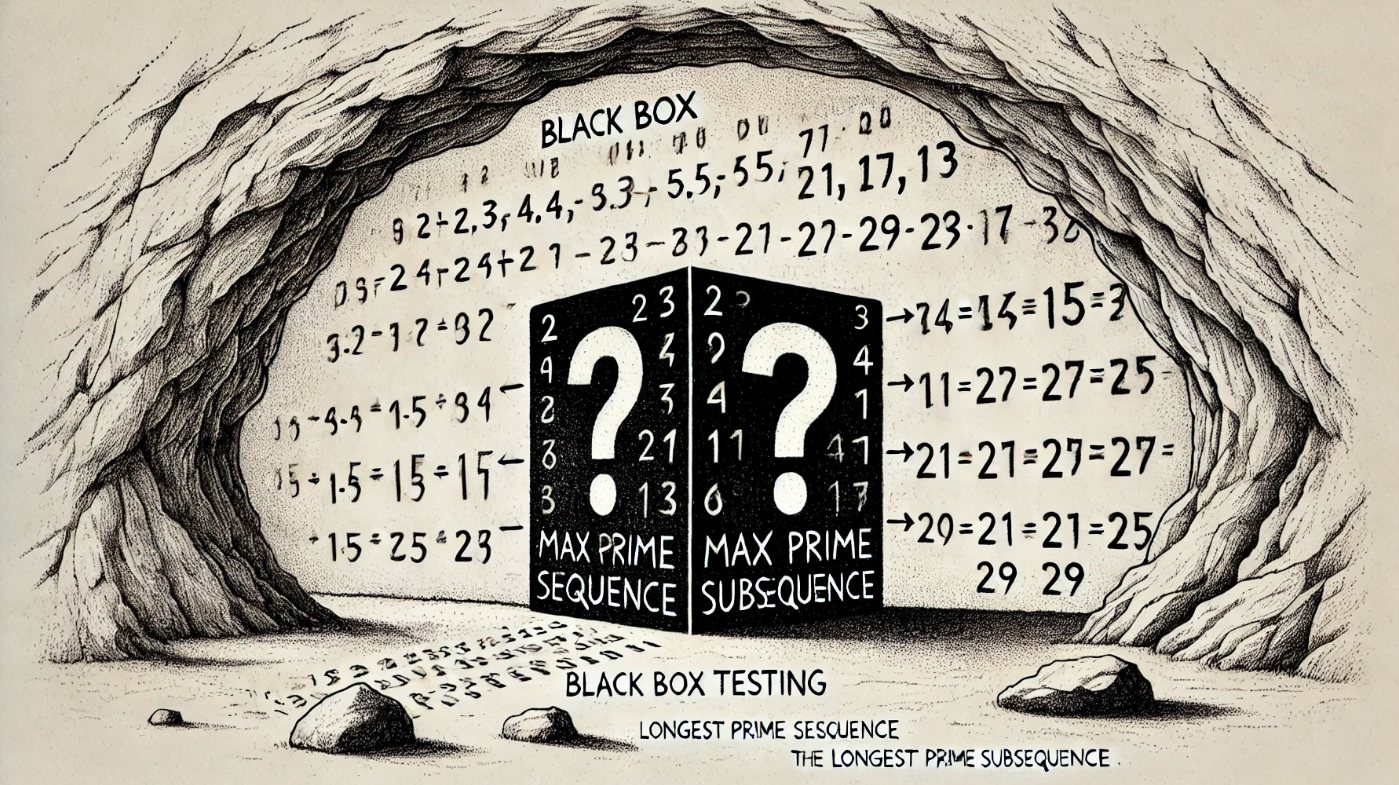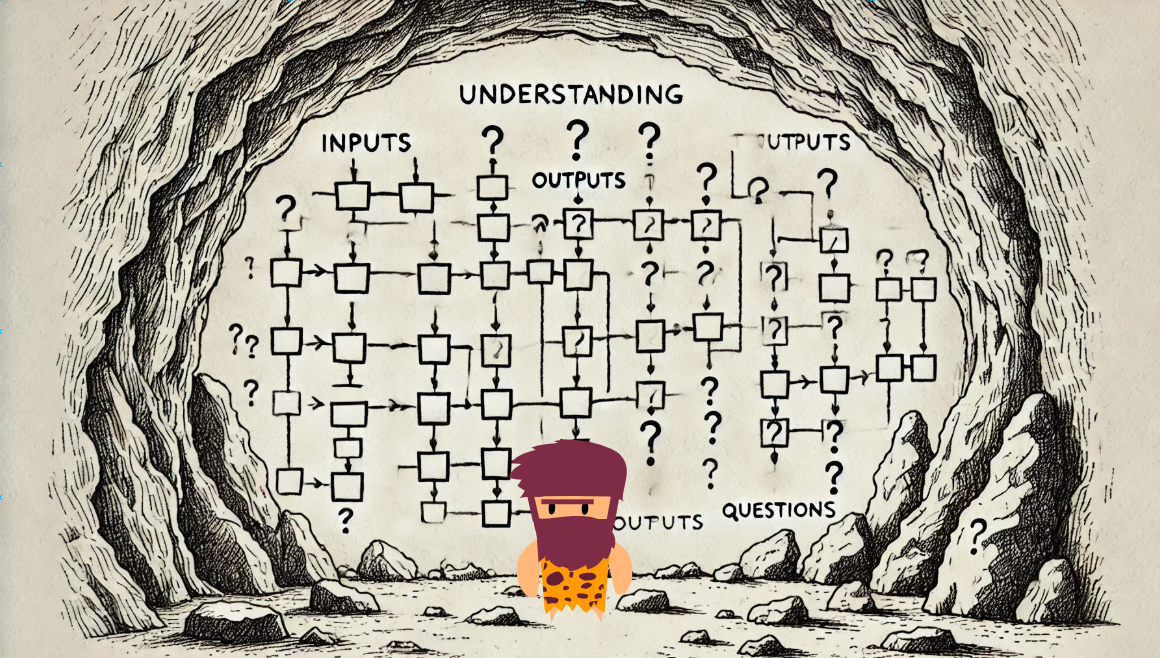Black Box Testing
Maximal Sequence of Prime Numbers Problem

📜 Story
BUGA has upgraded his stone computer! 🪨💻
Now, he has to solve a new challenge:
👉 Find the longest sequence of prime numbers in an array of natural numbers!
But… oh no! 😱
BUGA doesn’t know how to approach this, and he’s afraid his stone CPU might explode if he tries to check all the numbers one by one!
Help BUGA analyze the problem, split inputs into equivalence classes, find tricky edge cases, and write tests! 🔍🔥
🛠 Step 1: Understanding the Problem

✅ BUGA's Dilemma:
"Me have big list of numbers. Me need to find longest prime sequence… but how??" 😵💫
Before BUGA can test anything, he needs to understand:
- What is a prime number?
- What is a sequence of prime numbers?
- What does the function take as input?
- What does it return as output?
- What are the preconditions and postconditions of the function?
📌 Task: Define the function specification
Help BUGA by filling in this table:
| Aspect | Description |
|---|---|
| Function Name | maxPrimeSequence |
| Input | ? |
| Preconditions | ? |
| Output | ? |
| Postconditions | ? |
✍️ Fill in the missing parts to help BUGA understand the function!
🛠 Step 2: Splitting Inputs into Equivalence Classes

✅ BUGA's Dilemma:
"Me see too many numbers!! Some prime, some not. Me need groups!!" 🤯
Instead of testing every possible array, let’s group inputs into categories using Equivalence Partitioning.
📌 Task: Fill in the Equivalence Partitioning Table
| Equivalence Class | Example Inputs | Expected Output | Notes |
|---|---|---|---|
| ✅ E1: All elements are prime | [2, 3, 5, 7] | [2, 3, 5, 7] | The whole array is prime |
| ✅ E2: Some primes, some not | ... | ... | ... |
| ... | ... | ... | ... |
✍️ Complete the missing parts so BUGA can test smarter, not harder!
🛠 Step 3: Finding the Tricky Edge Cases

✅ BUGA's Dilemma:
"Bugs hide in corners! Me need to check edges!" 🦷😨
BUGA needs to test Boundary Values—the critical numbers and sequences where bugs might appear.
📌 Task: Fill in the Boundary Value Analysis Table
| Boundary Condition | Test Input | Expected Output | Reasoning |
|---|---|---|---|
| E1 Lower boundary - 1 | [] | [] | the lower bound of E1 -1 |
| E1 Lower boundary | [2] | [2] | the bound of E1 |
| E1 Lower boundary + 1 | [2, 3] | [2, 3] | the upper bound of E1 |
| ... | ... | ... | ... |
✍️ Help BUGA complete this table to catch tricky edge cases!
🛠 Step 4: Writing Unit Tests in JUnit

✅ BUGA's Dilemma:
"Me must write Java tests?! Me prefer hitting rock!" 🪨💻
Now that BUGA understands what to test, he needs to write JUnit tests.
📌 Task: Write the JUnit test cases
import static org.junit.jupiter.api.Assertions.*;
import org.junit.jupiter.api.Test;
@Tag("BBT")
class PrimeTest {
@Test
void testPrimeNumbersE1() {
// TODO: Implement test for equivalence partition 1
// given
// when
// then
}
@Test
void testPrimeNumbersBvaE1() {
// TODO: Implement test for boundary values of equivalence partition 1
// given
// when
// then
}
...
}
✍️ Help BUGA write the unit tests for all identified EPs and BVAs!
Congratulations! You have successfully helped BUGA master another Black Box Testing challenge! 🎉 🐒 Now go forth and test like a caveman… but smarter! 🦴💻🔥